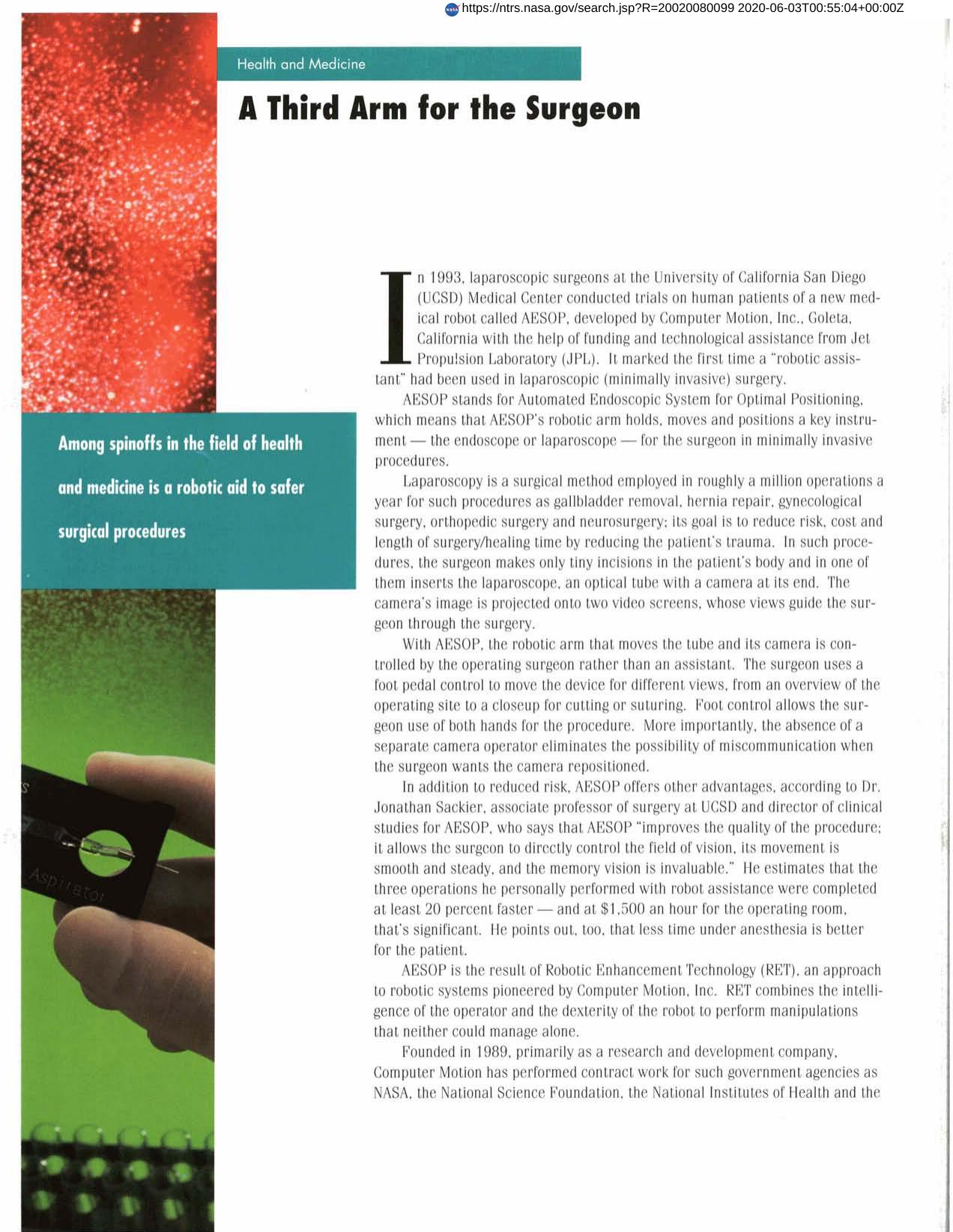
A Third Arm for the Surgeon
In laparoscopic surgery, tiny incisions are made in the patient's body and a laparoscope (an optical tube with a camera at the end) is inserted. The camera's image is projected onto two video screens, whose views guide the surgeon through the procedure. AESOP, a medical robot developed by Computer Motion, Inc. with NASA assistance, eliminates the need for a human assistant to operate the camera. The surgeon uses a foot pedal control to move the device, allowing him to use both hands during the surgery. Miscommunication is avoided; AESOP's movement is smooth and steady, and the memory vision is invaluable. Operations can be completed more quickly, and the patient spends less time under anesthesia. AESOP has been approved by the FDA.
Full article: http://hdl.handle.net/hdl:2060/20020080099

A Third Arm for the Surgeon

A Third Arm for the Surgeon













